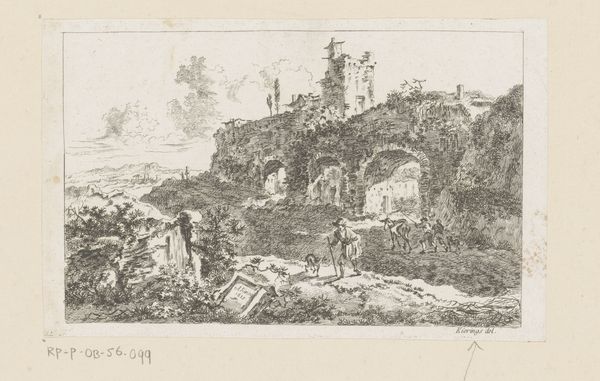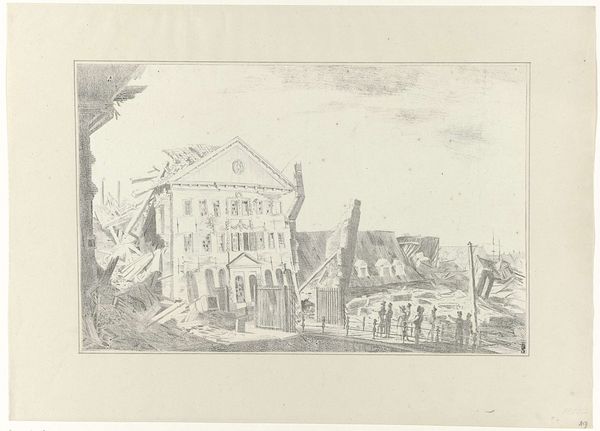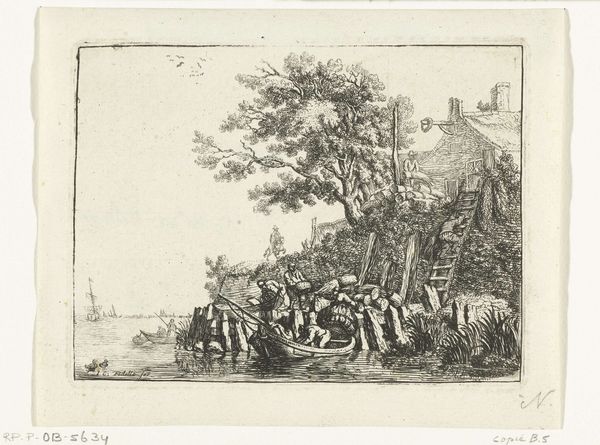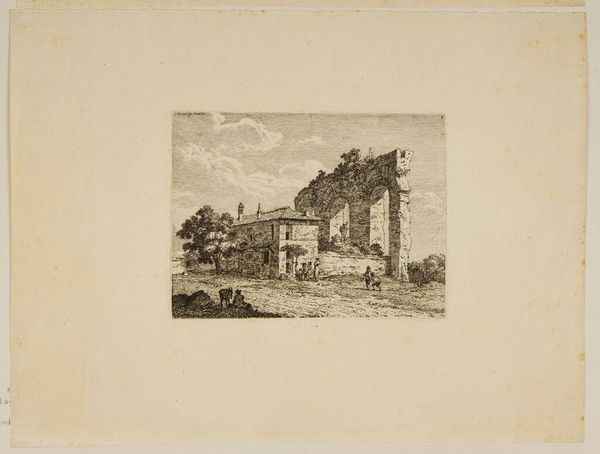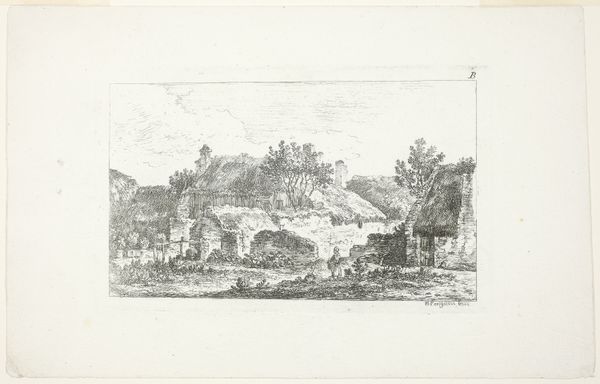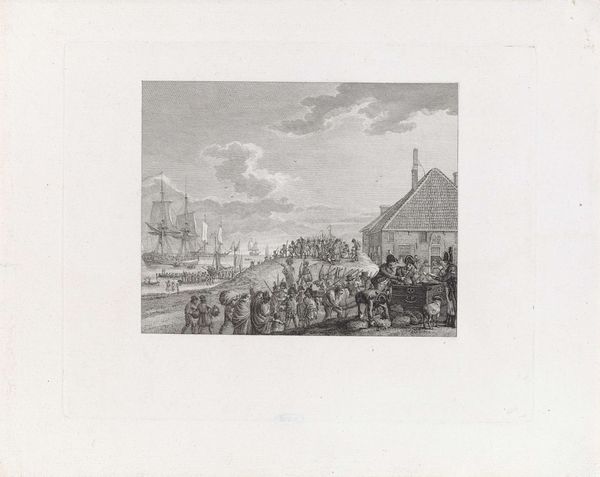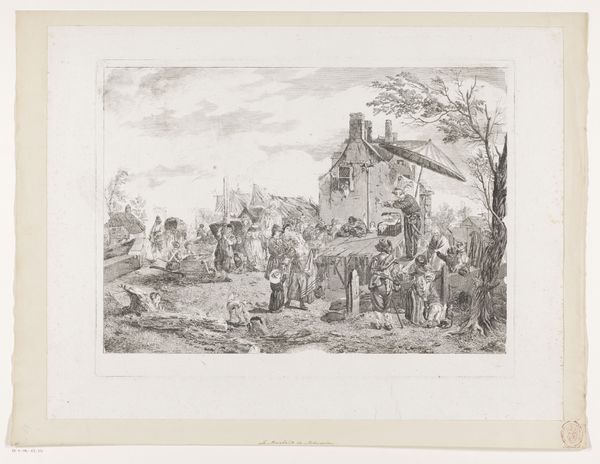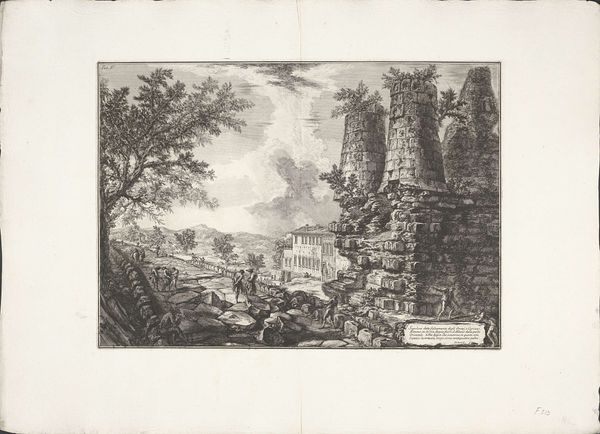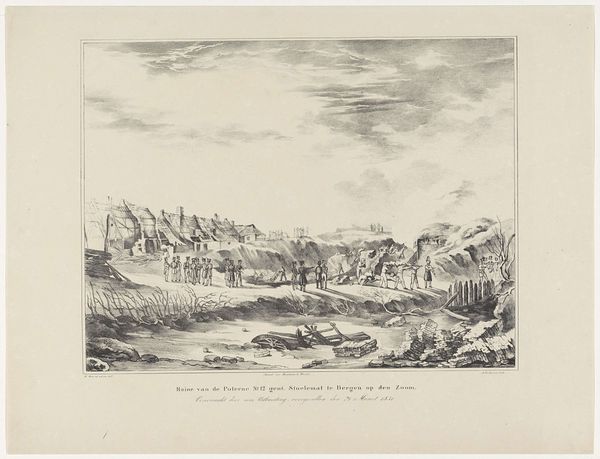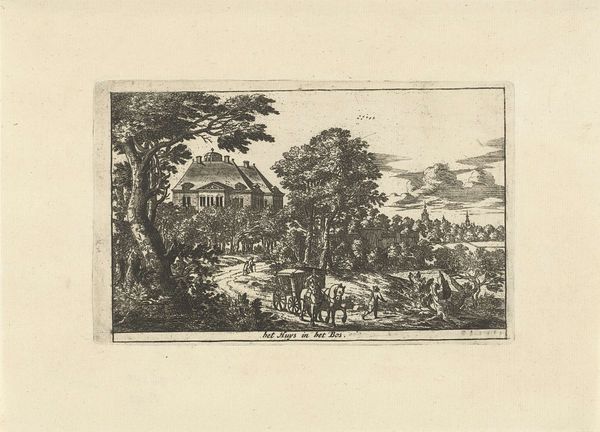
etching
#
baroque
#
etching
#
landscape
#
figuration
#
cityscape
#
history-painting
Dimensions: height 227 mm, width 334 mm
Copyright: Rijks Museum: Open Domain
Jan van Ossenbeeck’s “Festivities at the Ruins of the Cave of the Nymph Egeria” was produced in the 17th century using etching, a printmaking technique dependent on precise work with acid and metal. The image shows a crowd of figures cavorting amongst ancient ruins, a scene teeming with life. But let’s consider the making. Ossenbeeck would have first coated a metal plate with a waxy ground, then carefully scratched away lines to expose the metal beneath. Immersing the plate in acid would bite into these lines, creating grooves to hold ink. The final print results from pressing the inked plate onto paper. The etching technique, though indirect, allowed for a remarkable level of detail and nuance. The quality of the printed line—thin or thick, light or dark—is entirely dependent on the strength of the acid, the amount of time it is left to bite, and the force with which it is applied to the printing press. The etched line stands in contrast to drawing by hand, pointing us to an era where images could be made with tools, rather than bare hands. By attending to these processes and social context, we gain a richer understanding of the image and how it came into being.
Comments
No comments
Be the first to comment and join the conversation on the ultimate creative platform.

